By Walter Sabo
CEO Sabo Media Action Partners
A.K.A. Walter Sterling
Host, WPHT, Philadelphia
Host, Talk Media Network
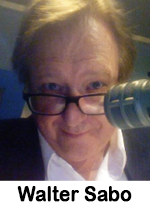 When a new restaurant opens, smart owners put the phone on busy so would-be diners believe the joint is hot, packed and hard to get in to. At street fairs we are drawn to merchant booths with long lines. Crowds give us confidence.
When a new restaurant opens, smart owners put the phone on busy so would-be diners believe the joint is hot, packed and hard to get in to. At street fairs we are drawn to merchant booths with long lines. Crowds give us confidence.
My mentor, Ed McLaughlin, as president of the ABC Radio Networks had one dictate when presented with a new idea: Make it bigger.
Last week radio hosted a major event. An event so big that it was covered by all media, except… except… radio and most radio trades. After turning down the Washington Post and The New York Times, the President of the United States gave the longest interview of his tenure to a radio star, Howard Stern. A commercial radio interview. Not NPR. Not MSNBC, not The View. Radio. The president, like hundreds of other leaders and businesses believes radio is the best medium to sell his message.
The president’s choice of medium should now be the first slide on every sales deck of every radio pitch. Today!
The damage of small. Many people in our business sell small and it hurts the industry. It’s easy to be dismissive of the Stern interview of Biden… instead, why not own it? Make it your interview because you share the same playing field.
Smart media executives do everything they can to make their stage seem to earn the largest possible audience. Cable, for example sells “homes passed.” Really. Cable sells the number of homes that can receive the advertiser’s message because those homes have cable. Using cable’s selling logic, radio could win every buyer’s analysis by selling “radios installed.”
About 20 years ago radio sellers started showing their station’s “time spent listening” (TSL) data to media buyers. That is the lowest number. While local TV stations sell their “designated market area” (DMA), radio mines the very tiniest delivery number: TSL
Your website’s first name is WORLD WIDE. Shockingly many radio companies strive to make their website “more local.” Stations have federal licenses dictating that their signal is specifically LOCAL. Your website could turn your station into a world-wide business with pristine world-wide delivery. Rather than grow, many broadcasters fought to have permission to geo-fence their signal, they fought to get smaller.
A major ratings week’s results for FOX News or CNN would get the program director of WLTW, KOST, Z100 or WINS fired. CNN had an average of 601,000 viewers in March. What’s your station’s cume? CNN grossed $1.1 BILLION dollars. They aren’t selling numbers. They are selling their brand: CNN or FOX or MSNBC. Cable networks, all with tiny viewership compared with WCBS-AM, WBZ-AM, or KFI’s cume, deliver ancient demos yet they are grossing a billion bucks by selling their brand and their environment. They sell shows. A show is as big as the seller and buyer can imagine. Imagine bigger.
Put simply: 1010 WINS has more listeners in New York City than the “Tonight Show” has viewers in New York City. There’s your second slide.
Media buyers want a deal. They want radio to bring in the buy. But the CEO of the brand wants an environment for their message that moves product. Your hosts can move product. Your listener can name your hosts, which instills trust and listeners can recall copy points from hosts’ live reads. To an investor, the relationship between your listener and your host is defined as goodwill. Goodwill adds considerable value to your station. Selling the dynamic of listener engagement will justify much higher rates than TSL.
Walter Sabo has been a C Suite action partner for companies such as SiriusXM, Hearst, Press Broadcasting, Gannett, RKO General and many other leading media outlets. His company HITVIEWS, in 2007, was the first to identify and monetize video influencers. HITVIEWS clients included Pepsi, FOX TV, Timberland, Microsoft, and CBS Television. He can be reached at sabowalter@gmail.com. His nightly show “Walter Sterling at Night” is debuting next week on WPHT, Philadelphia. His syndicated show, “Sterling On Sunday,” from Talk Media Network, airs 10:00 pm-1:00 am ET, now in its 10th year of success.
Share this with your network
 43% of spoken word listening, and podcasts 36%. Keep in mind that for Edison’s purposes spoken word content includes news, sports talk and play-by-play, audiobooks, talk shows, and “personalities.” Edison states, “Podcasting’s share of spoken word will almost surely surpass that of AM/FM within a few more years. There is one more thing to note – the advantage for AM/FM is coming entirely from those age 65 and older. Among those ages 13-64, podcasting has already passed AM/FM listening by, 41% to 39%. Meanwhile, among the oldest Americans age 65+, AM/FM radio continues to dominate, with a 66%-13% advantage. Curiously, that 66%-13% difference among the oldest Americans is the exact same difference we recorded for all Americans 13+ in 2017.”
43% of spoken word listening, and podcasts 36%. Keep in mind that for Edison’s purposes spoken word content includes news, sports talk and play-by-play, audiobooks, talk shows, and “personalities.” Edison states, “Podcasting’s share of spoken word will almost surely surpass that of AM/FM within a few more years. There is one more thing to note – the advantage for AM/FM is coming entirely from those age 65 and older. Among those ages 13-64, podcasting has already passed AM/FM listening by, 41% to 39%. Meanwhile, among the oldest Americans age 65+, AM/FM radio continues to dominate, with a 66%-13% advantage. Curiously, that 66%-13% difference among the oldest Americans is the exact same difference we recorded for all Americans 13+ in 2017.”


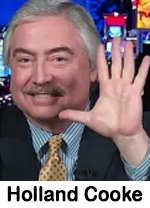 Got young local radio news talent? CONGRATULATIONS, for five reasons:
Got young local radio news talent? CONGRATULATIONS, for five reasons:
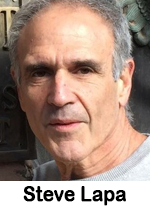 Almost everything I know about pricing strategy I learned from domestic airlines. Guess what? Airlines are at it again and I hope you are watching and learning.
Almost everything I know about pricing strategy I learned from domestic airlines. Guess what? Airlines are at it again and I hope you are watching and learning.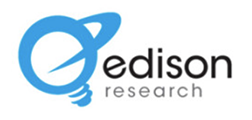 reach. “Republicans listen to more AM/FM radio than other groups, with an index of 109 (or 9% more listening than average). The ad-supported spoken-word channels on SiriusXM are a particularly efficient place to find Republicans, with an index of 146. Meanwhile, podcasts stand out as the more efficient platform for reaching Democrats, indexing at 121. And what about those elusive Independents, who often tip an election? Both streaming music, and in particular music videos on YouTube, over-deliver for these potential voters, with indexes of 103 and 123 respectively.” Edison adds, “Regardless of the party that buyers are trying to reach with political ads, audio stands out as a superior pathway to reaching voters. Audio provides enormous audiences and often a far less cluttered political environment than other ad channels.”
reach. “Republicans listen to more AM/FM radio than other groups, with an index of 109 (or 9% more listening than average). The ad-supported spoken-word channels on SiriusXM are a particularly efficient place to find Republicans, with an index of 146. Meanwhile, podcasts stand out as the more efficient platform for reaching Democrats, indexing at 121. And what about those elusive Independents, who often tip an election? Both streaming music, and in particular music videos on YouTube, over-deliver for these potential voters, with indexes of 103 and 123 respectively.” Edison adds, “Regardless of the party that buyers are trying to reach with political ads, audio stands out as a superior pathway to reaching voters. Audio provides enormous audiences and often a far less cluttered political environment than other ad channels.”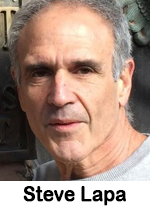 What happened to us? Unless we move quickly, the radio business stands to lose the final frontier: in-car listening.
What happened to us? Unless we move quickly, the radio business stands to lose the final frontier: in-car listening. AI-generated content in political ads; 2) Proposing to apply the disclosure rules to both candidate and issue advertisements; 3) Requesting comment on a specific definition of AI-generated content, and 4) Proposing to apply the disclosure requirements to broadcasters and entities that engage in origination programming, including cable operators, satellite TV and radio providers and section 325(c) permittees. Chairwoman Jessica Rosenworcel says, “As
AI-generated content in political ads; 2) Proposing to apply the disclosure rules to both candidate and issue advertisements; 3) Requesting comment on a specific definition of AI-generated content, and 4) Proposing to apply the disclosure requirements to broadcasters and entities that engage in origination programming, including cable operators, satellite TV and radio providers and section 325(c) permittees. Chairwoman Jessica Rosenworcel says, “As 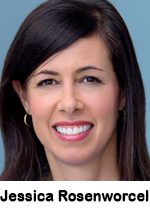 artificial intelligence tools become more accessible, the Commission wants to make sure consumers are fully informed when the technology is used. Today, I’ve shared with my colleagues a proposal that makes clear consumers have a right to know when AI tools are being used in the political ads they see, and I hope they swiftly act on this issue.” However, Republican Commissioner Brendan
artificial intelligence tools become more accessible, the Commission wants to make sure consumers are fully informed when the technology is used. Today, I’ve shared with my colleagues a proposal that makes clear consumers have a right to know when AI tools are being used in the political ads they see, and I hope they swiftly act on this issue.” However, Republican Commissioner Brendan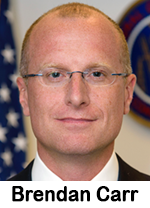 Carr opposes the move, saying, “There is no doubt that the increase in AI-generated political content presents complex questions, and there is bipartisan concern about the potential for misuse. But none of this vests the FCC with the authority it claims here. Indeed, the Federal Election Commission is actively considering these types of issues, and legislators in Congress are as well. But Congress has not given the FCC the type of freewheeling authority over these issues that would be necessary to turn this plan into law. And for good reason. The FCC can only muddy the waters. AI-generated political ads that run on broadcast TV will come with a government-mandated disclaimer but the exact same or similar ad that runs on a streaming service or social media site will not? Consumers don’t think about the content they consume through the lens of regulatory silos. They just view content on screens. Will they conclude that the absence of a government warning on an online ad means that the content must be real? I don’t see how this type of conflicting patchwork could end well. Unlike Congress, the FCC cannot adopt uniform rules.”
Carr opposes the move, saying, “There is no doubt that the increase in AI-generated political content presents complex questions, and there is bipartisan concern about the potential for misuse. But none of this vests the FCC with the authority it claims here. Indeed, the Federal Election Commission is actively considering these types of issues, and legislators in Congress are as well. But Congress has not given the FCC the type of freewheeling authority over these issues that would be necessary to turn this plan into law. And for good reason. The FCC can only muddy the waters. AI-generated political ads that run on broadcast TV will come with a government-mandated disclaimer but the exact same or similar ad that runs on a streaming service or social media site will not? Consumers don’t think about the content they consume through the lens of regulatory silos. They just view content on screens. Will they conclude that the absence of a government warning on an online ad means that the content must be real? I don’t see how this type of conflicting patchwork could end well. Unlike Congress, the FCC cannot adopt uniform rules.” be able to alter the course of established radio stations and the marketplace of ideas before the 2024 election or even soon thereafter. Harrison told “America at Night” host Rich Valdés last night (5/22) that radio is far too idiosyncratic an industry – already run by too many people who don’t understand how it really operates – for someone (who also doesn’t really have first-hand experience in the field) to just step in and make drastic alterations to entrenched stations, formats, audiences and sponsors just to make a political statement. Harrison states, “There are more
be able to alter the course of established radio stations and the marketplace of ideas before the 2024 election or even soon thereafter. Harrison told “America at Night” host Rich Valdés last night (5/22) that radio is far too idiosyncratic an industry – already run by too many people who don’t understand how it really operates – for someone (who also doesn’t really have first-hand experience in the field) to just step in and make drastic alterations to entrenched stations, formats, audiences and sponsors just to make a political statement. Harrison states, “There are more 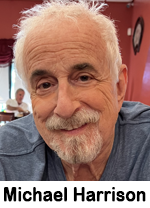 expedient uses of his money if that is his main purpose. After all, not all Audacy stations are conservative news/talkers… many are music, sports and a variety of formats. How inefficient such a move would be!” Harrison went on to say that radio is still an extremely powerful and potentially lucrative medium if only its present owners and operators believed in it and invested in its programming and marketing. He encouraged radio broadcasters to understand and believe in the “esthetic of ‘radio’ and not be so anxious to bail out into the utilitarian term ‘audio.’” Harrison and Valdés tied the discussion into the current news about the AM for Every Vehicle Act currently making its way through Congress stating that radio is still a lifeline for service to the community as a place for information, education, and entertainment and that eliminating it from automobile dashboards would be about “five to 10 years premature.”
expedient uses of his money if that is his main purpose. After all, not all Audacy stations are conservative news/talkers… many are music, sports and a variety of formats. How inefficient such a move would be!” Harrison went on to say that radio is still an extremely powerful and potentially lucrative medium if only its present owners and operators believed in it and invested in its programming and marketing. He encouraged radio broadcasters to understand and believe in the “esthetic of ‘radio’ and not be so anxious to bail out into the utilitarian term ‘audio.’” Harrison and Valdés tied the discussion into the current news about the AM for Every Vehicle Act currently making its way through Congress stating that radio is still a lifeline for service to the community as a place for information, education, and entertainment and that eliminating it from automobile dashboards would be about “five to 10 years premature.” 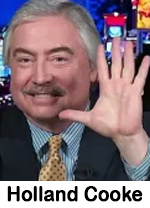 Because you can? Because you aren’t doing AM/FM radio? Because you are on radio, but can’t-do-there what you can-do podcasting? Because you are making money podcasting?
Because you can? Because you aren’t doing AM/FM radio? Because you are on radio, but can’t-do-there what you can-do podcasting? Because you are making money podcasting?
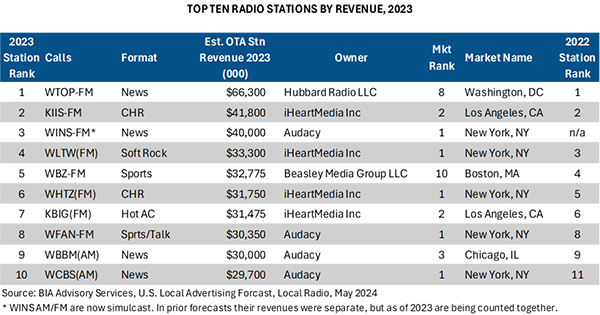
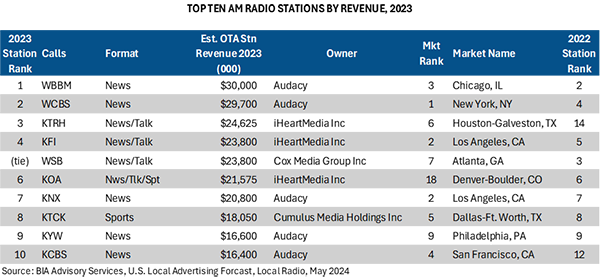
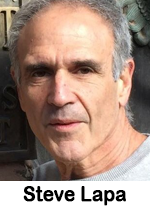 Does anyone care anymore?
Does anyone care anymore? When a new restaurant opens, smart owners put the phone on busy so would-be diners believe the joint is hot, packed and hard to get in to. At street fairs we are drawn to merchant booths with long lines. Crowds give us confidence.
When a new restaurant opens, smart owners put the phone on busy so would-be diners believe the joint is hot, packed and hard to get in to. At street fairs we are drawn to merchant booths with long lines. Crowds give us confidence. Audio advantage.” The guide provides data to counter prevailing myths that marketers often believe. Some examples include: 1) the notion that “apps have all the audience” is not true as “ad-supported platforms are key to marketer’s winning and Audacy’s 200 million+ is miles above Spotify (48.6M) and Pandora (41.2M)”; 2) “young people don’t listen to audio” isn’t true as 96% of Gen Z listen to audio daily – with 44% being daily radio users; and 3) “I can’t measure audio” is also false because marketers can “track, measure and analyze
Audio advantage.” The guide provides data to counter prevailing myths that marketers often believe. Some examples include: 1) the notion that “apps have all the audience” is not true as “ad-supported platforms are key to marketer’s winning and Audacy’s 200 million+ is miles above Spotify (48.6M) and Pandora (41.2M)”; 2) “young people don’t listen to audio” isn’t true as 96% of Gen Z listen to audio daily – with 44% being daily radio users; and 3) “I can’t measure audio” is also false because marketers can “track, measure and analyze 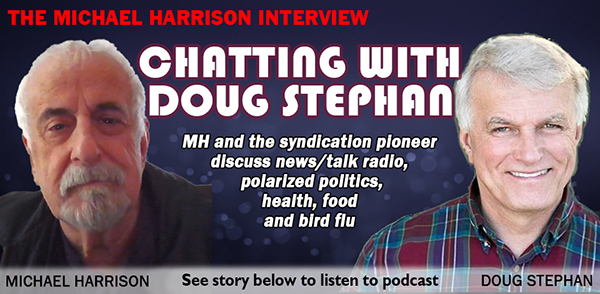
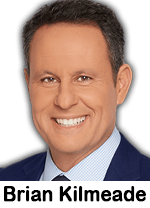 daypart, starting Monday (5/6). KLIF program director Bruce Collins says, “We are extremely excited to add Brian Kilmeade to the 570 KLIF-AM/96.3 FM-HD2 weekday radio lineup, especially as we head into the election season. Brian will be talking each day to the movers and shakers in the political world, keeping DFW up to date. Together with Sean Hannity weekday afternoons from 4:00 pm to 7:00 pm, we have the national political scene more than covered.” Kilmeade comments, “I am thrilled to be joining a great station with a rich history like KLIF and enter the fourth biggest market in the country. I’m honored to be a part of this first-class lineup right in the middle of this historic election season, and in short order will be in Dallas to meet all the listeners in person!”
daypart, starting Monday (5/6). KLIF program director Bruce Collins says, “We are extremely excited to add Brian Kilmeade to the 570 KLIF-AM/96.3 FM-HD2 weekday radio lineup, especially as we head into the election season. Brian will be talking each day to the movers and shakers in the political world, keeping DFW up to date. Together with Sean Hannity weekday afternoons from 4:00 pm to 7:00 pm, we have the national political scene more than covered.” Kilmeade comments, “I am thrilled to be joining a great station with a rich history like KLIF and enter the fourth biggest market in the country. I’m honored to be a part of this first-class lineup right in the middle of this historic election season, and in short order will be in Dallas to meet all the listeners in person!” Commerce vowed to sue the FTC to block the proposal, calling it ‘an unlawful power grab’ in a statement shortly after the vote. The chamber, as well as the two dissenting [FTC] commissioners, has argued that the FTC doesn’t have the authority to address this issue and that it should be left to the states.” The Times piece notes that the rule becomes law 120 days after being published in the Federal Register – meaning sometime in late August – but that legal challenges could block or delay the change. In the radio industry, most on-air talent, programmers, and sales staff who work under written contracts have a noncompete clause that prevents them from working “across the street” usually for six months. If this new policy stands, it will be a monumental change for radio companies.
Commerce vowed to sue the FTC to block the proposal, calling it ‘an unlawful power grab’ in a statement shortly after the vote. The chamber, as well as the two dissenting [FTC] commissioners, has argued that the FTC doesn’t have the authority to address this issue and that it should be left to the states.” The Times piece notes that the rule becomes law 120 days after being published in the Federal Register – meaning sometime in late August – but that legal challenges could block or delay the change. In the radio industry, most on-air talent, programmers, and sales staff who work under written contracts have a noncompete clause that prevents them from working “across the street” usually for six months. If this new policy stands, it will be a monumental change for radio companies. 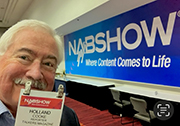 If you’re looking to jump-start – or optimize – your video interview technique, this session alone was worth the trip to Las Vegas. Washington-based video content strategist/producer/interviewer
If you’re looking to jump-start – or optimize – your video interview technique, this session alone was worth the trip to Las Vegas. Washington-based video content strategist/producer/interviewer 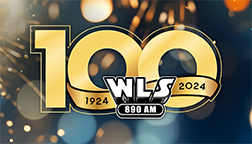 president and market manager Marv Nyren says, “WLS is bigger than a destination on your radio dial – it’s a Chicago institution and treasure. 100 years ago, radio was simply sound communication via radio waves but there’s nothing simple about the impact of WLS on Chicago. WLS has been a neighbor, a friend, and a mentor for people in Chicagoland. It’s been a place where people can go for entertainment and information – and it’s been a companion to the biggest moments in history. We are excited to usher in WLS-AM’s next 100 years with Chicago’s best audio content on-air, online, on-demand, and onsite.”
president and market manager Marv Nyren says, “WLS is bigger than a destination on your radio dial – it’s a Chicago institution and treasure. 100 years ago, radio was simply sound communication via radio waves but there’s nothing simple about the impact of WLS on Chicago. WLS has been a neighbor, a friend, and a mentor for people in Chicagoland. It’s been a place where people can go for entertainment and information – and it’s been a companion to the biggest moments in history. We are excited to usher in WLS-AM’s next 100 years with Chicago’s best audio content on-air, online, on-demand, and onsite.” It seems every hour Nielsen and Pierre Bouvard of Cumulus fame (formerly of Westwood One) put out a release stating that radio is just fine, thank you. Radio is more persuasive than TV, direct mail, streaming and print. Radio is a proven success for over 100 years. Most of the buildings housing Procter & Gamble were built on radio – not TV – advertising success. Happily, P&G realized radio’s clout and is now a dominant radio advertiser – again!
It seems every hour Nielsen and Pierre Bouvard of Cumulus fame (formerly of Westwood One) put out a release stating that radio is just fine, thank you. Radio is more persuasive than TV, direct mail, streaming and print. Radio is a proven success for over 100 years. Most of the buildings housing Procter & Gamble were built on radio – not TV – advertising success. Happily, P&G realized radio’s clout and is now a dominant radio advertiser – again!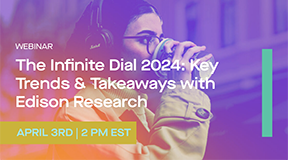 consumer behavior and technology adoption across smart platforms. Marketers and media buyers turn to these insights for important media trends in key channels such as radio, streaming audio, podcasts, social media, and more. Audacy will host a webinar on April 3 with head of research & insights Idil Cakim and Edison Research president Larry Rosin, who will share key trends from The Infinite Dial 2024, including: Media consumption and device adoption, in-car listening habits, podcast trends among key demographic groups, and observations and advertiser insights.
consumer behavior and technology adoption across smart platforms. Marketers and media buyers turn to these insights for important media trends in key channels such as radio, streaming audio, podcasts, social media, and more. Audacy will host a webinar on April 3 with head of research & insights Idil Cakim and Edison Research president Larry Rosin, who will share key trends from The Infinite Dial 2024, including: Media consumption and device adoption, in-car listening habits, podcast trends among key demographic groups, and observations and advertiser insights. 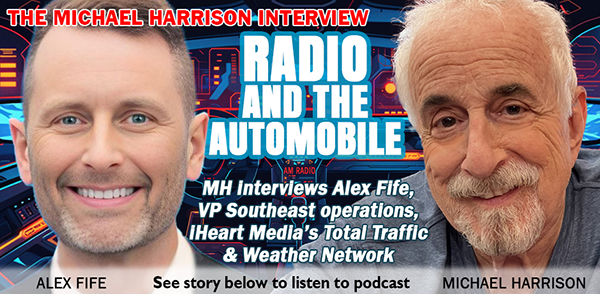
 other platforms. Titled, Hendrie, and produced by Freestyle Digital Media and directed by Patrick Reynolds, the film features people like Hendrie’s one-time program director David Hall as well as comedians and Hollywood figures talking about the unique radio program Hendrie launched in 1990 in which he held kooky conversations with offbeat characters – all played by Hendrie himself – in real time. Hendrie tells KCAL-TV, “It was completely original… and it satirized something that I thought needed satirizing – talk radio.”
other platforms. Titled, Hendrie, and produced by Freestyle Digital Media and directed by Patrick Reynolds, the film features people like Hendrie’s one-time program director David Hall as well as comedians and Hollywood figures talking about the unique radio program Hendrie launched in 1990 in which he held kooky conversations with offbeat characters – all played by Hendrie himself – in real time. Hendrie tells KCAL-TV, “It was completely original… and it satirized something that I thought needed satirizing – talk radio.” 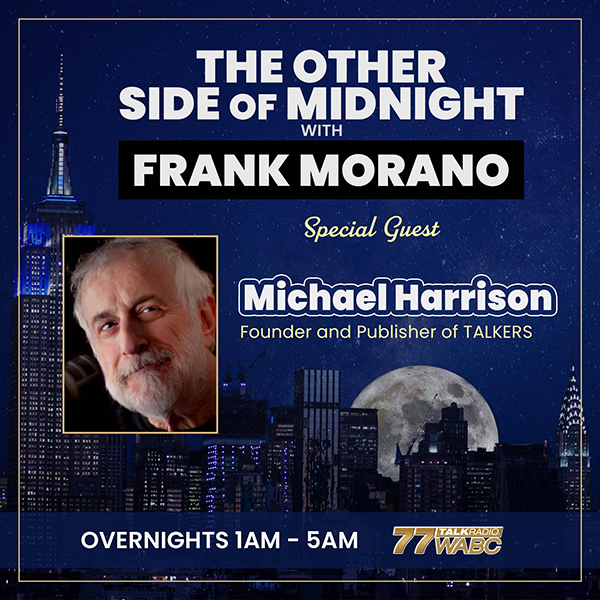
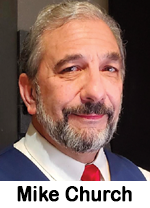 devotion to Internet radio broadcasting, we are launching ‘The Mike Church Show’ into terrestrial radio syndication! The launch date of ‘The Mike Church Show’ will be March 1 and the show will begin its repatriation of AM/FM radio in Atlanta, Georgia’s #7 U.S. radio market on WXKG “The King”! Church adds, “We’ve always known that terrestrial radio was going to play a part in our industry leading development of Internet radio, we just didn’t know in what way. Over the last two years, that role began to materialize with the dearth of quality talk shows and the opportunities to fill that gap left by the wrecking ball that was consolidation’s march through local radio properties.” The program airs live from 7:00 am to 10:00 am ET.
devotion to Internet radio broadcasting, we are launching ‘The Mike Church Show’ into terrestrial radio syndication! The launch date of ‘The Mike Church Show’ will be March 1 and the show will begin its repatriation of AM/FM radio in Atlanta, Georgia’s #7 U.S. radio market on WXKG “The King”! Church adds, “We’ve always known that terrestrial radio was going to play a part in our industry leading development of Internet radio, we just didn’t know in what way. Over the last two years, that role began to materialize with the dearth of quality talk shows and the opportunities to fill that gap left by the wrecking ball that was consolidation’s march through local radio properties.” The program airs live from 7:00 am to 10:00 am ET.  If you’re a news/talk station, don’t assume that you own “news radio” in your market. Imaging is important, but it merely talks-the-talk. You walk-the-walk with local news copy that delivers what solid commercial copy does: benefits. Just doing local news makes you special. But do listeners simply hear a station voice… reading something? Are you merely… accurate? Or do you deliver “take-home pay,” unwrapping the story to tell the listener something useful?
If you’re a news/talk station, don’t assume that you own “news radio” in your market. Imaging is important, but it merely talks-the-talk. You walk-the-walk with local news copy that delivers what solid commercial copy does: benefits. Just doing local news makes you special. But do listeners simply hear a station voice… reading something? Are you merely… accurate? Or do you deliver “take-home pay,” unwrapping the story to tell the listener something useful?